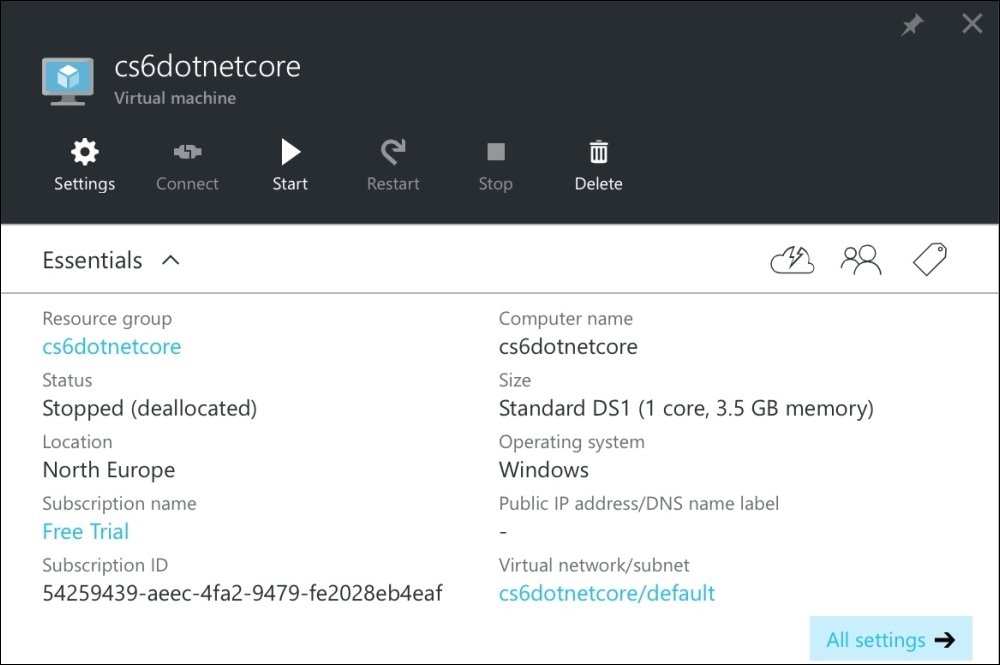To connect to a Microsoft Azure virtual machine, you can install Microsoft Remote Desktop from the Apple Mac OS X App Store.
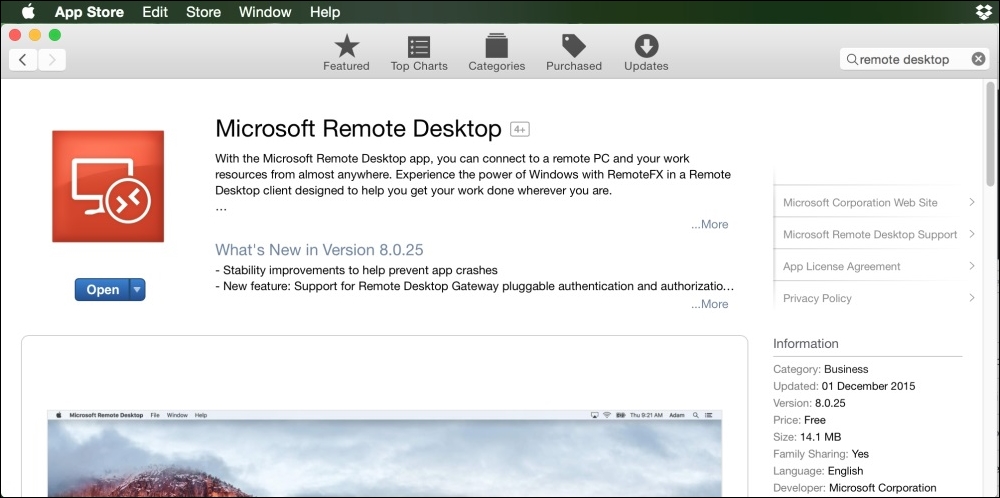
On the Dashboard window, click on All resources, and then click on the virtual machine you created earlier.
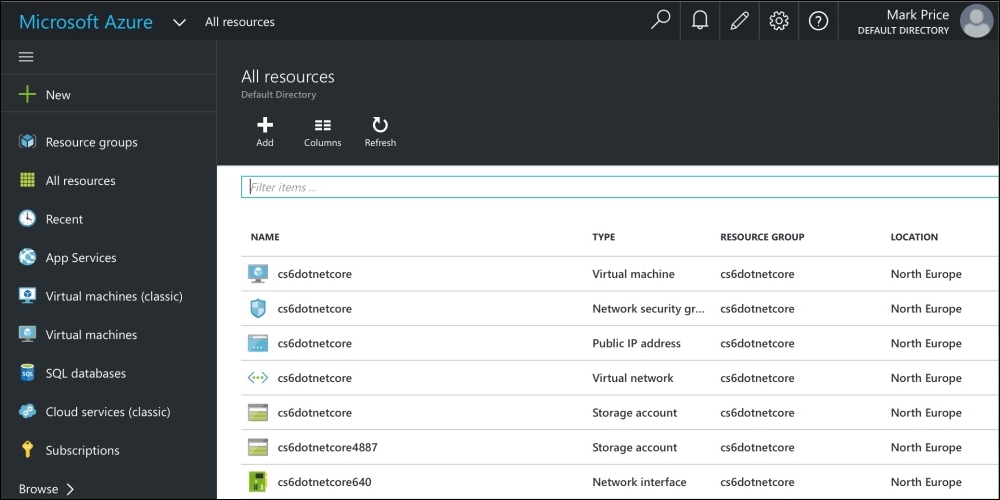
If your virtual machine does not have Running as the status, then click on Start.
Wait for the virtual machine to start. Click on Connect to download an RDP file.
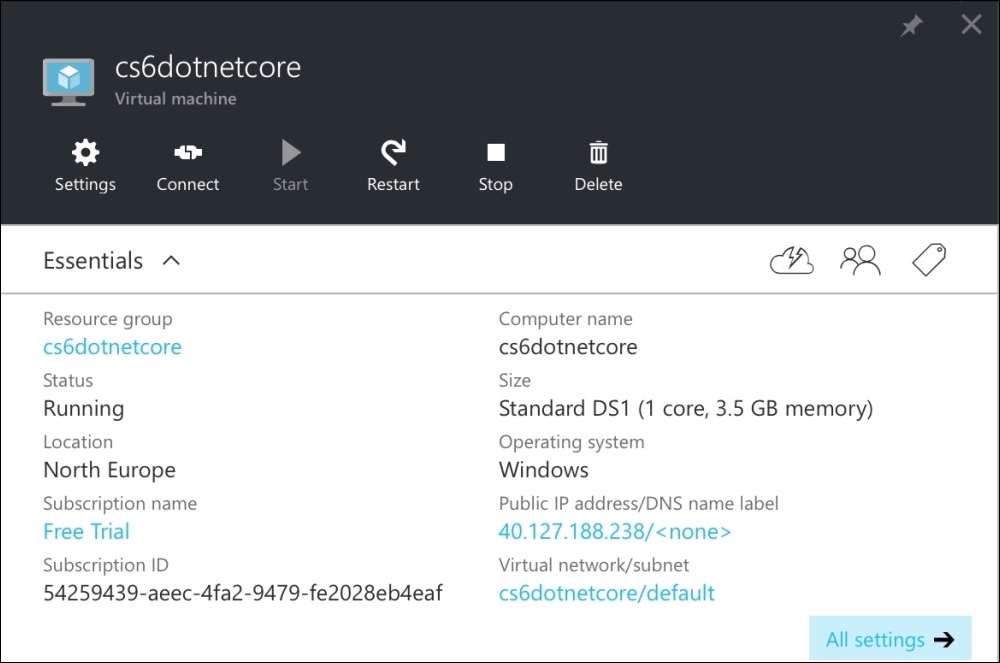
Double-click on the RDP file to connect to the virtual machine.
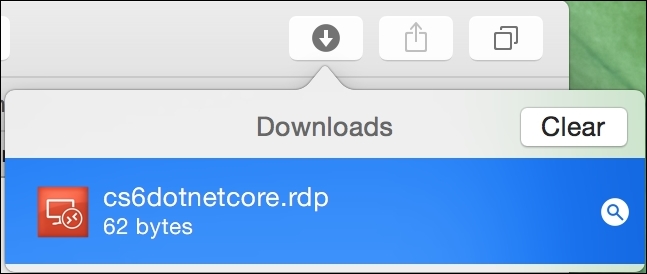
Click on Continue to accept the certificate.
Log in by entering the user name machinename\username and the password, which you chose when creating the virtual machine earlier, and then click on OK.

After logging in, you will have a window into the virtual machine. Click on the Windows Start button and start typing vis to find and run Visual Studio 2015.
When you are finished, the start screen will display a power button that allows the remote desktop window to disconnect or shut down.
Click on the power button and then click on Shut down.
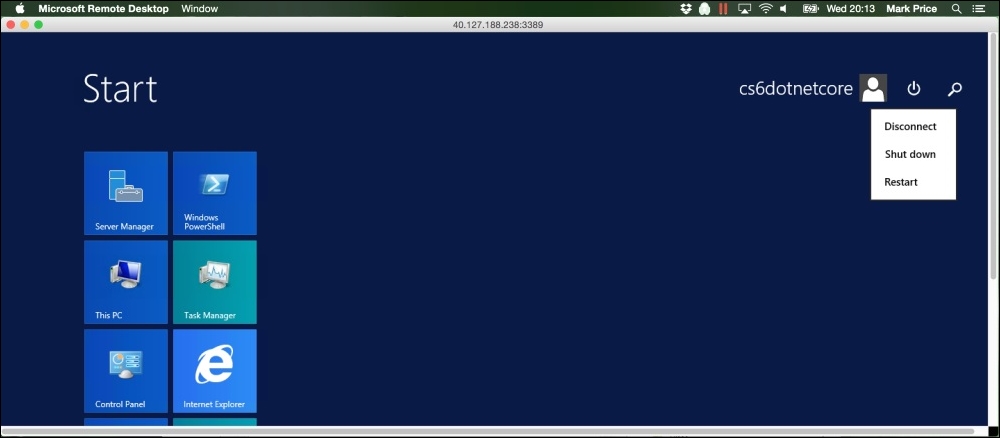
After the remote desktop window closes, return to the Azure portal. Note the orange warning that states that even though the virtual machine is shut down, it is still incurring charges because it is still using some resources.
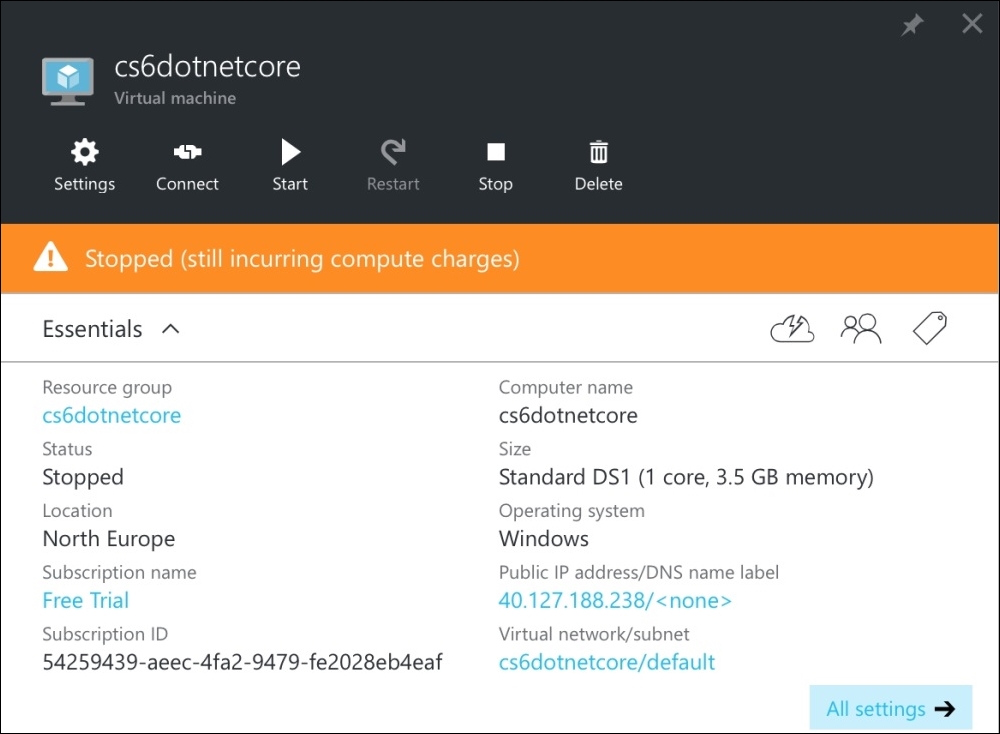
Click on Stop and then click on Yes to stop the virtual machine fully.
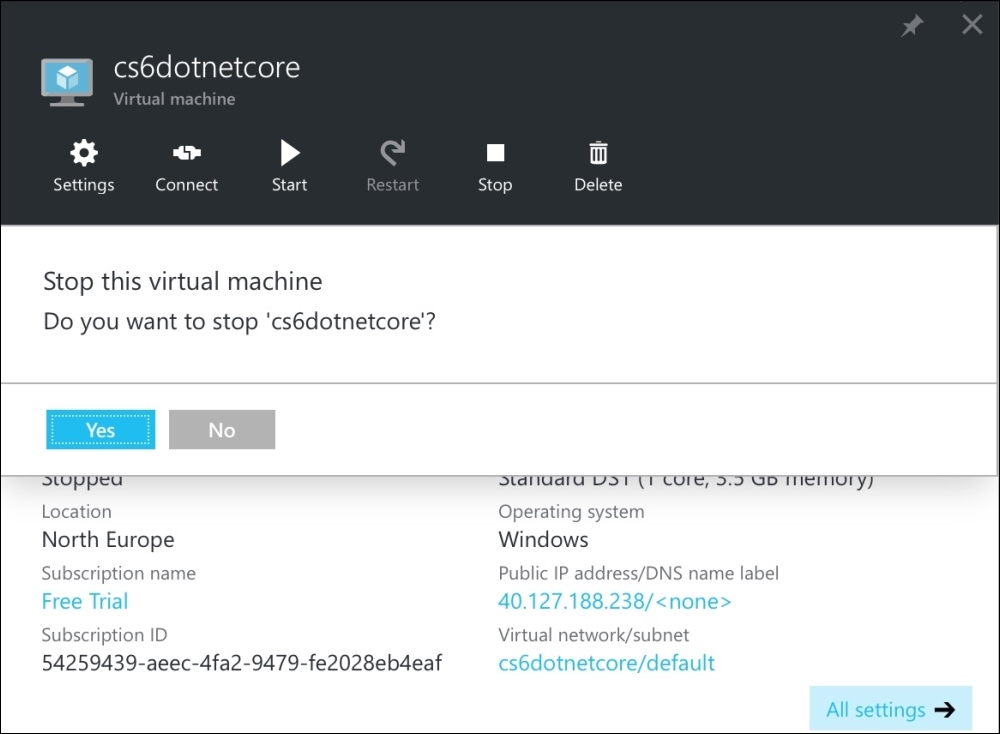
Wait for the virtual machine to stop.

Once the virtual machine is stopped, it will have Stopped (deallocated) as the status. This means that you are not being charged for this virtual machine.
